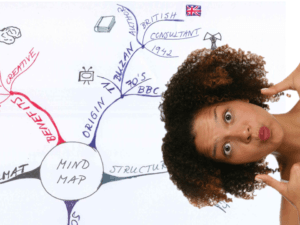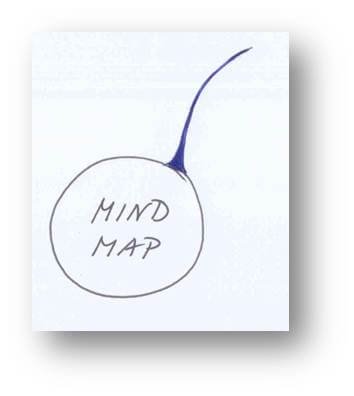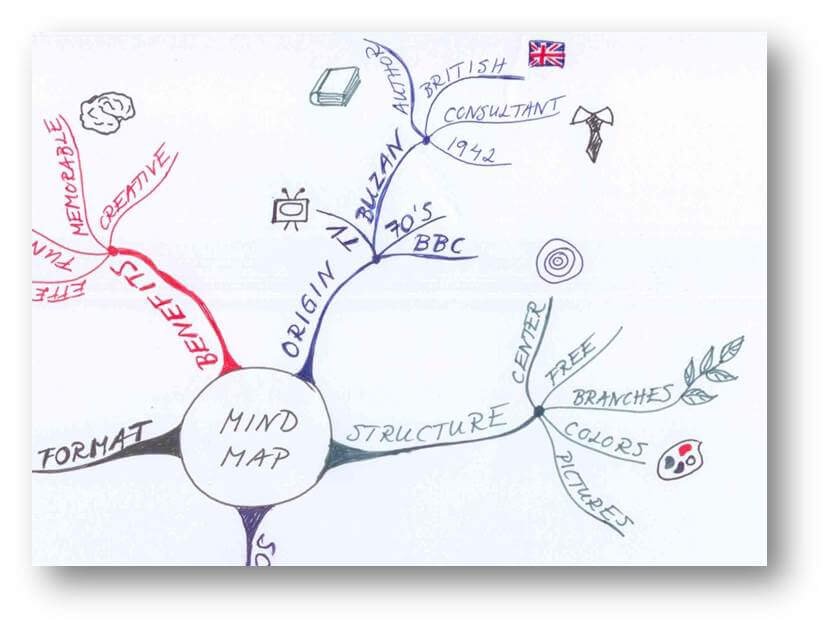Improve brainstorming using mind maps
 In January 2012 I wrote an article on how to lead a brainstorming session. One important aspect of brainstorming is capturing ideas through note-taking. In my article, I recommended that you take visual notes – using colors, pictures, shapes and symbols to capture the ideas that are generated during the meeting. One way to do this is by using a mind map. In this article, I want to give you some advice on how to mind map so that you can use this technique to lead more effective brainstorming sessions and also capture and share your own ideas in a more visual way.
In January 2012 I wrote an article on how to lead a brainstorming session. One important aspect of brainstorming is capturing ideas through note-taking. In my article, I recommended that you take visual notes – using colors, pictures, shapes and symbols to capture the ideas that are generated during the meeting. One way to do this is by using a mind map. In this article, I want to give you some advice on how to mind map so that you can use this technique to lead more effective brainstorming sessions and also capture and share your own ideas in a more visual way.
What is a mind map?
Citing Tony Buzan, the British author and consultant who has popularized the term, a mind map is “a thinking tool that reflects externally what goes on inside your head.” Tony further resembles the mind map with a “Swiss army knife for the brain”, a tool for anything that goes on in your mind – thinking, contemplation, cognition, remembering, creating”. The mind map is said to engage both the left (logical) and right (creative) cerebral hemisphere, thus maximizing the power of your brain.
How to mind map?
The technique of mind mapping is quite straightforward, even so, it takes some getting used to. Below are the steps, I can also recommend that you watch the video of Tony Buzan presenting mind maps on YouTube.
1) Write down your topic at the center of a blank page.
 This is to reflect the radiant way the brain works. The brain thinks centrally and spreads out in all directions. If you think of the word “chair” your brain visualizes the image of a chair surrounded by the many associations you have with the word.
This is to reflect the radiant way the brain works. The brain thinks centrally and spreads out in all directions. If you think of the word “chair” your brain visualizes the image of a chair surrounded by the many associations you have with the word.
2) Draw a curvy branch from the central topic for each associated idea.
 The branches should be curvy and free-flowing, just like tree branches in nature. Straight lines do not encourage creativity. Also, if you make the lines straight, they will all look the same, making the content more difficult to differentiate and remember.
The branches should be curvy and free-flowing, just like tree branches in nature. Straight lines do not encourage creativity. Also, if you make the lines straight, they will all look the same, making the content more difficult to differentiate and remember.
3) Add a single word to each branch; ideally, the word and the branch should be equal in length.
If you write more than one word per branch, these words will be connected, “glued” together. This limits your creativity when it comes to generating new ideas. To add more creativity and freedom to your thinking you should only have one word per branch.
The reason why the branch should have the same length as the word is to connect the branches. As Tony points out, “If you don’t have associations you don’t have connection, if you don’t have connection you don’t have memory and you don’t have thinking”.
4) Continue to add more branches as your ideas develop
 One of the benefits of mind mapping is that it ignites your imagination and creativity. Don’t worry about getting it right, what is important is the content, the ideas that you generate and capture.
One of the benefits of mind mapping is that it ignites your imagination and creativity. Don’t worry about getting it right, what is important is the content, the ideas that you generate and capture.
5) Use colors and images.
 Research shows that colors and images help us remember better. You are probably aware of the saying “a picture is worth a thousand words.” Adding drawings, photographs or other types of images to your mind map helps to enrich the content.
Research shows that colors and images help us remember better. You are probably aware of the saying “a picture is worth a thousand words.” Adding drawings, photographs or other types of images to your mind map helps to enrich the content.
Mind mapping on your computer
In the example above I made a hand-written mind map using pen and paper. If you are running a brainstorming session I recommend that you draw the mind map on a whiteboard. This way you can easier engage with the attendees and your body movement will add energy to the session.
There are a number of great mind mapping applications that you can use to make mind maps on your computer. Using software to create mind maps introduces a lot of benefits – you can easier re-arrange branches and images, you can collapse and expand nodes, you can change and update information and you can more easily share and collaborate on the mind map with others.
You can use Microsoft Visio to create a mind map, but it’s not a proper mind mapping application. If you want to start using mind maps to increase your productivity I would recommend something like MindJet. There are numerous other examples of mind mapping software on Wikipedia.
Good luck with your mind mapping and please share your comments!
(If you have difficulties reading this article, you can access the full article in pdf here).


